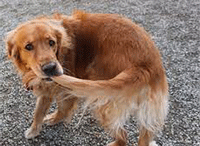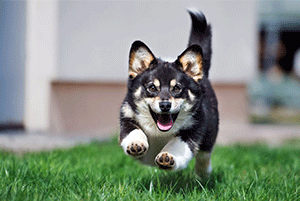Dogs exhibit a variety of behaviors that can sometimes be puzzling to their owners. Understanding these strange behaviors can help you better communicate with your furry friend and address any underlying issues. Here are some common strange dog behaviors and what they might mean.
Other Topics You Might Like
Other Topics You Might Like

PetLab Co. Probiotics Chew for Dogs

Health Extension Lifetime Multivitamin Tablets for Dogs

ThunderShirt for Dogs Anxiety Relief Calming Vest
"(Paid Links)" 
Tail Chasing
Tail chasing can be amusing to watch, but it often indicates something more than playful behavior. Reasons for tail chasing include:

Boredom or Excess Energy
Dogs may chase their tails to release pent-up energy or to entertain themselves when bored.
Medical Issues
Tail chasing can indicate medical problems such as fleas, anal gland issues, or neurological conditions. If the behavior persists, consult your veterinarian.
Compulsive Behavior
Some dogs develop compulsive behaviors, including tail chasing, as a response to anxiety or stress.
Scooting

Scooting, or dragging the bottom along the ground, is a behavior that can indicate discomfort. Common causes include:
Anal Gland Issues
Dogs have anal glands that sometimes need to be expressed. If they become impacted or infected, it can cause discomfort, leading to scooting.
Parasites
Intestinal parasites, such as worms, can cause itching and irritation around the anus.
Skin Irritation
Allergies or skin infections can cause itching and lead to scooting.
Head Tilting
Head tilting is a cute and curious behavior often seen when a dog is trying to understand something. Reasons for head tilting include:

Hearing Sounds
Dogs may tilt their heads to locate the source of a sound better.
Learning
Head tilting can be a sign that a dog is trying to understand a command or is curious about a new object or situation.
Medical Issues
Persistent head tilting can indicate ear infections, vestibular disease, or other medical conditions affecting balance and coordination. If your dog frequently tilts their head, consult your veterinarian.
Zoomies

Zoomies, or frenetic random activity periods (FRAPs), involve a burst of energy where a dog runs around wildly. Reasons for zoomies include:
Excess Energy
Dogs, especially puppies, often get the Zoomies when they have excess energy to burn.
Relief
After a bath or being confined for a while, dogs might release their pent-up energy through Zoomies.
Happiness
Zoomies can be a sign of pure joy and excitement, often occurring during playtime or when a dog is particularly happy.
Circling Before Lying Down
Many dogs circle before lying down, a behavior rooted in their ancestral past. Reasons for circling include:
Comfort
Circling helps a dog find a comfortable position and create a soft spot to lie down.
Instinct
In the wild, dogs would circle to tamp down grass, leaves, or snow to create a comfortable sleeping area and to check for predators.
Behavioral Habit
Circling can also become a habitual behavior that provides a sense of security and routine.
Staring
A dog’s stare can be intense and sometimes unnerving. Reasons for staring include:
Attention-Seeking
Dogs often stare to get their owner’s attention, whether for food, play, or affection.
Affection
Prolonged eye contact can be a sign of bonding and trust between a dog and their owner.
Reading Cues
Dogs stare to read facial expressions and body language, trying to understand what their owner is communicating.
Aggression
In some cases, staring can be a sign of aggression or dominance. It’s best to avoid direct eye contact and consult a professional trainer if accompanied by a stiff posture and growling.
Eating Grass
Many dogs eat grass, and while it might seem strange, it’s usually harmless. Reasons for grass eating include:
Digestive Aid
Some dogs eat grass to help induce vomiting if they feel unwell.
Nutrient Deficiency
Grass can provide fiber and other nutrients that might be lacking in their diet.
Boredom
Dogs might eat grass out of boredom or for something to do while outside.
Instinct
Wild canines eat a varied diet, including plant material, and domestic dogs may retain this instinct.
Licking People and Objects
Licking is a common dog behavior that can mean different things depending on the context. Reasons for licking include:
Affection
Dogs lick to show affection and bond with their owners and other dogs.
Communication
Licking can be a way for dogs to communicate, asking for attention or indicating submission.
Exploration
Dogs explore the world through their senses, and licking helps them gather information about their environment.
Self-Soothing
Licking can be a calming behavior that helps dogs relieve stress or anxiety.
By understanding these strange dog behaviors and their meanings, you can better address your dog’s needs and foster a stronger bond with your furry companion. If you ever have concerns about your dog’s behavior, consulting with a veterinarian or professional dog trainer can provide valuable insights and guidance.
